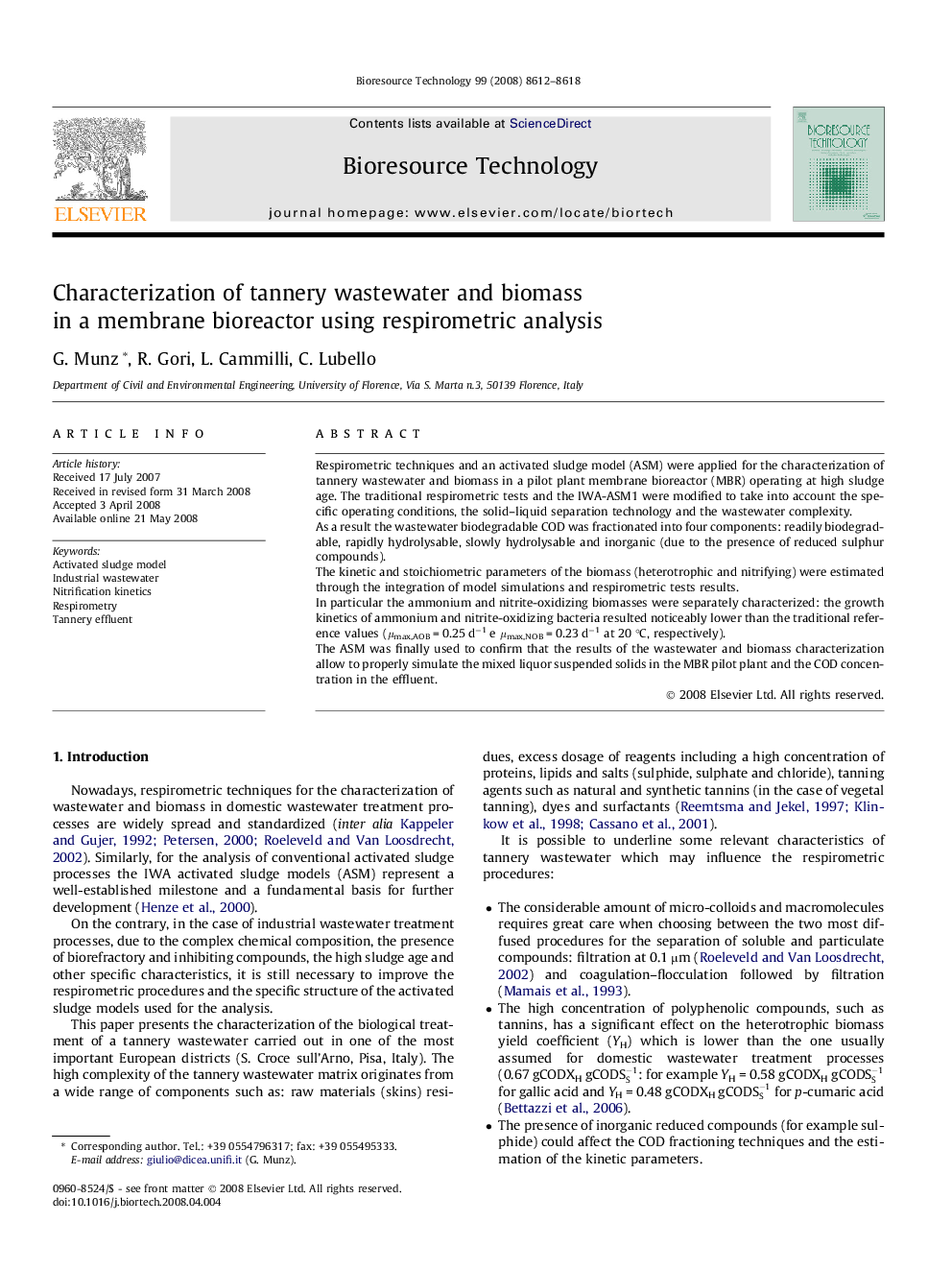| Article ID | Journal | Published Year | Pages | File Type |
|---|---|---|---|---|
| 684753 | Bioresource Technology | 2008 | 7 Pages |
Respirometric techniques and an activated sludge model (ASM) were applied for the characterization of tannery wastewater and biomass in a pilot plant membrane bioreactor (MBR) operating at high sludge age. The traditional respirometric tests and the IWA-ASM1 were modified to take into account the specific operating conditions, the solid–liquid separation technology and the wastewater complexity.As a result the wastewater biodegradable COD was fractionated into four components: readily biodegradable, rapidly hydrolysable, slowly hydrolysable and inorganic (due to the presence of reduced sulphur compounds).The kinetic and stoichiometric parameters of the biomass (heterotrophic and nitrifying) were estimated through the integration of model simulations and respirometric tests results.In particular the ammonium and nitrite-oxidizing biomasses were separately characterized: the growth kinetics of ammonium and nitrite-oxidizing bacteria resulted noticeably lower than the traditional reference values (μmax,AOB = 0.25 d−1 e μmax,NOB = 0.23 d−1 at 20 °C, respectively).The ASM was finally used to confirm that the results of the wastewater and biomass characterization allow to properly simulate the mixed liquor suspended solids in the MBR pilot plant and the COD concentration in the effluent.
